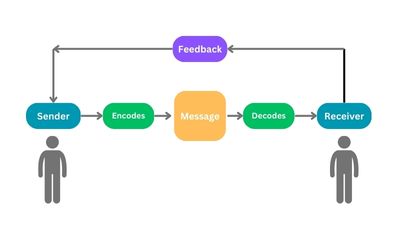
Bridging Differences: How Better Communication Helps Cross-Functional Teams Deliver Results
Australian workplaces are more diverse than ever, bringing together different cultures, generations and expertise. And while this mix can present challenges, it also creates powerful opportunities.
With the right approach, teams can transform differences into strengths – driving fresh ideas, innovation and smarter problem-solving.
How can managers and their teams use communication to bridge differences and work effectively together?
Clear communication, mutual respect, and strong leadership are crucial to overcoming gaps, enabling diverse teams to collaborate effectively.
However, research shows that over 70% managers struggle with communication, often due to factors like fear of conflict, lack of trust or avoidance of accountability. Additionally, employees often feel uncomfortable conveying information about potential problems to their superiors, especially when there’s a perceived power imbalance.
These communication barriers can be even more pronounced in cross-functional collaborations, highlighting the need for managers to develop strong communication skills to bridge differences and foster effective teamwork.
One of the reasons I set up Edmonds Facilitation was to address these communication barriers and stimulate team collaboration.
Clients at Edmonds Marketing often highlighted the value of our strategy workshops in bringing cross-functional teams and leadership together to unpack issues, align on solutions and improve collaboration.
The following simple but powerful communication tool can help teams bridge these gaps and collaborate more effectively.
The Feedback Loop: A Simple Yet Powerful Tool
In interpersonal communication, a feedback loop happens when the receiver responds to a message, allowing the sender to gauge understanding and adjust their approach.

This ongoing exchange sharpens clarity, alignment, and engagement, making conversations flow smoothly.
I first encountered the feedback loop as a university student, and it has stuck with me as a game-changer for workplace communication. It’s a core concept in communication theory, but its power becomes evident when put into practice in the office.
Julian Treasure, a leading expert on effective listening, explains that we all process sound and messages differently. I highly recommend Julian’s TED talks on effective listening. This video is a particular favourite – 5 Ways to Listen Better.
Without a structured feedback process, messages can easily be misinterpreted, causing frustration and inefficiency.
Practical Steps to Implement the Feedback Loop in Your Team
To keep your team connected, aligned, and engaged, try these steps:
- Encourage Active Listening: Help your team listen to understand, not just to respond. This makes all the difference in creating meaningful conversations.
- Ask for Clarification: Encourage asking questions and verifying instead of assuming—clear communication is key to avoiding misunderstandings.
- Create a Safe Communication Culture: Foster a space where everyone feels comfortable giving and receiving feedback, which builds trust and openness.
- Reduce Noise: Identify and eliminate factors that distort communication—whether it’s jargon, unclear messaging, or cultural differences.
- Use Feedback as a Learning Tool: Regularly reflect on how your team communicates and continuously refine your approach to make it even stronger.
By fostering clear communication and mutual understanding, teams can turn diversity into a powerful advantage.
Effective communication isn’t just about exchanging information—it’s about creating shared understanding and alignment.
At Edmonds Facilitation, we help teams break down barriers, foster collaboration, and develop solutions that are not only more effective but also embraced by the whole team.
To learn more about how we can support your team, please get in touch.
If you liked this blog, then you might be interested in these:

